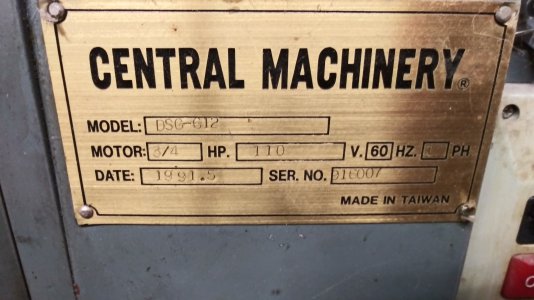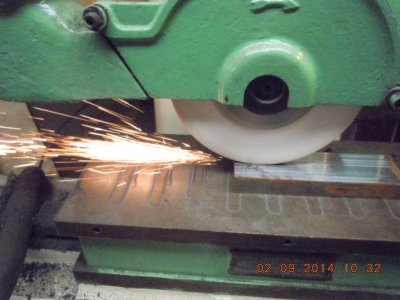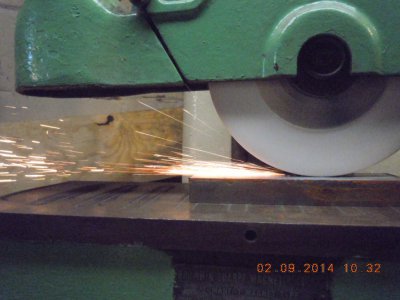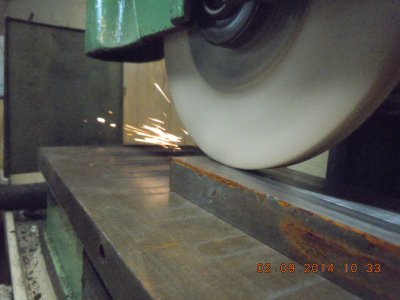- Joined
- May 23, 2017
- Messages
- 109
I purchase new a Central machine DSG-612 model surface grinder (horrible fright). It has never had a good surface finish, and I have checked balance on the 7" wheels it uses.
I suspect poor quality manufacture, as there were some horrible manufacturing defects found many years ago in the cross slide front bearing mount (hammering of too thick of material, and it was made from scrap).
I want to disassemble the motor shaft rotor from it's custom housing to see what the bearings are, and if they are ABEC high tolerance or just minimal quality.
Has anyone here done this? Same model was sold as a low end surface grinder, elsewhere. Grizzly has this as G5963. Their manual has no disassembly or repair instructions.
As seen in the exploded view, the bearings are numbered 67-8,9. Is one of the spanner nuts (shown in below photos) a preload method to tighten the bearing slop? I don't want to go backwards and make the issue worse.
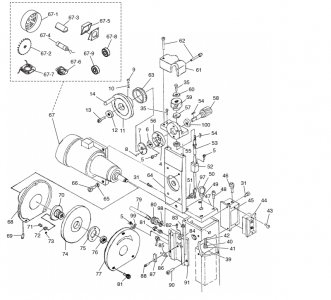
The spindle has a left hand thread M16x1.5, which appears to have been cut using a hand held threading die, as there is a swash plate wobble to the nut when I spin it on. Don't know why this was not single point threaded on the manufacturing machine, other then I'm guessing they had it mounted on centers and didn't have tooling to cut the threads correctly.
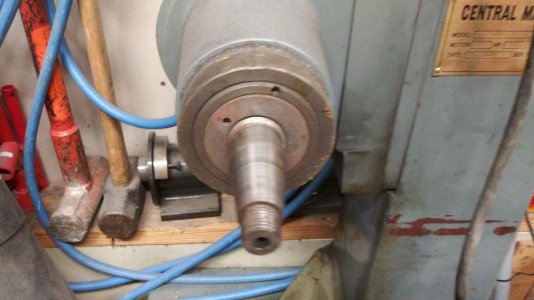
I do need to make the custom pin spanner for both of these face mounted nuts. These are 4mm size holes.
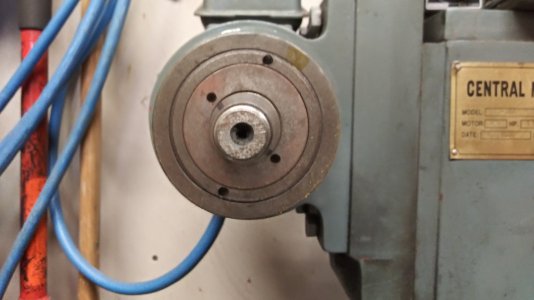
Below is a photo of the surface finish this machine has produced from day one (A2 tool steel scrap, hardened). It does grind flat to within tenths. But I want surface finish like the 3 inch grinding vise it is sitting on.
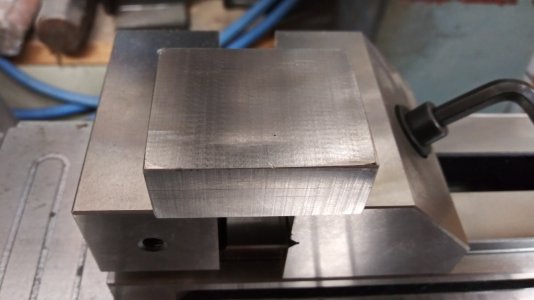
I suspect poor quality manufacture, as there were some horrible manufacturing defects found many years ago in the cross slide front bearing mount (hammering of too thick of material, and it was made from scrap).
I want to disassemble the motor shaft rotor from it's custom housing to see what the bearings are, and if they are ABEC high tolerance or just minimal quality.
Has anyone here done this? Same model was sold as a low end surface grinder, elsewhere. Grizzly has this as G5963. Their manual has no disassembly or repair instructions.
As seen in the exploded view, the bearings are numbered 67-8,9. Is one of the spanner nuts (shown in below photos) a preload method to tighten the bearing slop? I don't want to go backwards and make the issue worse.

The spindle has a left hand thread M16x1.5, which appears to have been cut using a hand held threading die, as there is a swash plate wobble to the nut when I spin it on. Don't know why this was not single point threaded on the manufacturing machine, other then I'm guessing they had it mounted on centers and didn't have tooling to cut the threads correctly.

I do need to make the custom pin spanner for both of these face mounted nuts. These are 4mm size holes.

Below is a photo of the surface finish this machine has produced from day one (A2 tool steel scrap, hardened). It does grind flat to within tenths. But I want surface finish like the 3 inch grinding vise it is sitting on.



